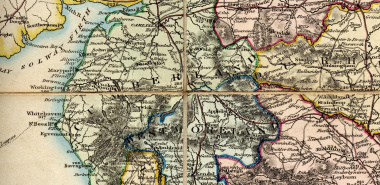
carbon print, 1890 or before
NPG Ax8713 ©National Portrait Gallery
In this post, I discuss a curious mistake in a report in the Lakes Herald Newspaper, which is ironically relevant to Eliza Lynn Linton’s gender and sexual ambivalence.
I have written in previous posts about Eliza Lynn Linton, the author who was born in 1822 in Crosthwaite Vicarage, near Keswick, Cumberland. Her father, Reverend James Lynn, was vicar of Crosthwaite, and her mother, Charlotte Alicia Goodenough, was a daughter of a former bishop of Carlisle. Eliza Lynn Linton herself had a long writing career, and published books of LGBTQ interest today. She died of illness in 1898.
The Lakes Herald newspaper, which was published in Ambleside, Westmorland, noted Eliza Lynn Linton’s death, as would be expected for a famous locally born author. However due to error, typographical, or otherwise, what the paper actually printed on 22 July, 1898, was, “Mrs. E. Lynn Linton who was at that period the wife of Mr. E.L. Linton, the famous wood engraver, was just then becoming popular as a novelist…” In fact, Eliza Lynn Linton became the wife of Mr William James Linton, W.J. Linton, and this confusion of intitals makes it look as though Eliza Lynn was her own wife.
The writer in the Lakes Herald realised this mistake, and a week later, on 29 July, 1898, they explained, “In the hurriedly scribbled note of last week upon the late Mrs. Lynn Linton, there crept in a most egregious mistake which anyone might mark as a palpable clerical error – or else a freak of the “typo.” I made it appear the deceased authoress was the wife of E. Lynn Linton, though she was nothing of the kind. She was the second wife of Mr. William James Linton…”
Why is this intriguing? The strange gender ambiguity of the newspaper death notice, where Eliza Lynn Linton, by chance error, becomes both husband and wife, reminds us of her gender ambiguity as portrayed by her and perceived by others during her lifetime.
In my post on Eliza Lynn Linton’s novel of 1885, The Autobiography of Christopher Kirkland, I discuss at length how she creates a largely autobiographical book by changing her sex to that of a man, Christopher Kirkland, and by changing the names and even the sex of some of the important characters. In the novel, Eliza Lynn Linton’s marriage to W.J. Linton becomes that of Christopher Kirkland to the female character, Esther Lambert. The attraction and disintegration of this relationship and the life of the household full of children by William James Linton’s first wife are all depicted.
Why Eliza Lynn Linton chose to cloak herself in a male persona can not be completely known. If by doing so, she hoped to disguise the autobiographical nature of the novel, then that was a failure. Both in contemporary reviews and in later criticism, her novel has been presumed to be largely autobiographical, and has been mined for information about her life.
In George Layard Soames’s biography of her, written not long after Lynn Linton’s death, he quotes Mrs Rosa Campbell Praed, who observed about Lynn Linton, “She was such a curious mixture too of the man and the woman.” (p.222)
It is a chance error, then, but also strangely fitting, that the Lakes Herald newspaper inadvertently described her as both husband and wife.
Acknowledgements:
The Lakes Herald, Friday, 22 July, 1898, p.4
The Lakes Herald, Friday, 29 July, 1898, p.4
George Somes Layard. Mrs Lynn Linton. Methuen: London, 1901
Available online at https://archive.org/details/cu31924013517002
Eds Deborah T. Meem and Kate Holterhoff. The Autobiography of Christopher Kirkland, Brighton : Victorian Secrets, 2011
